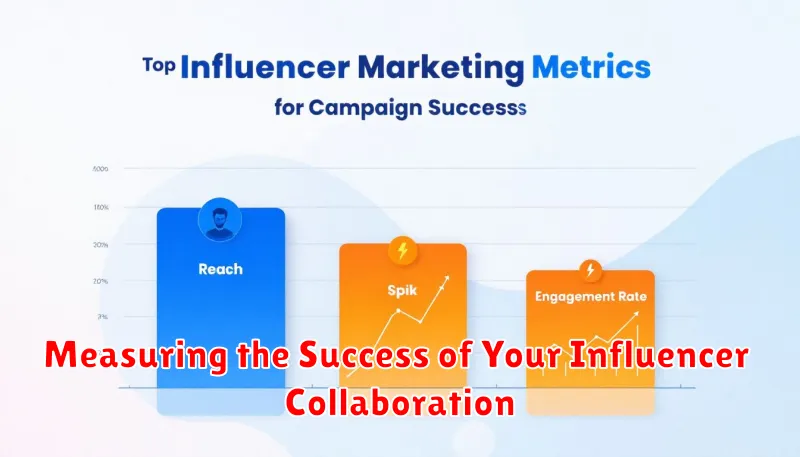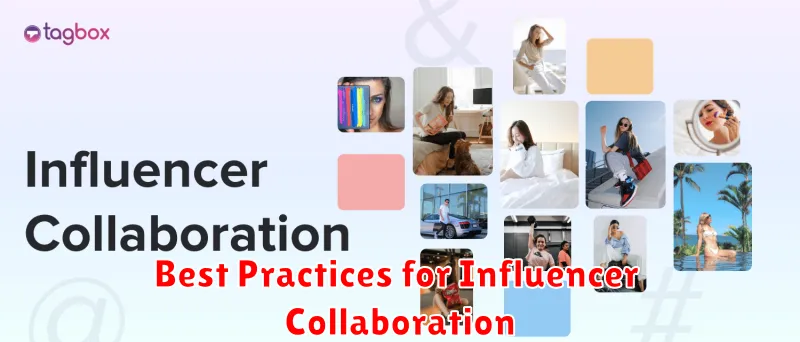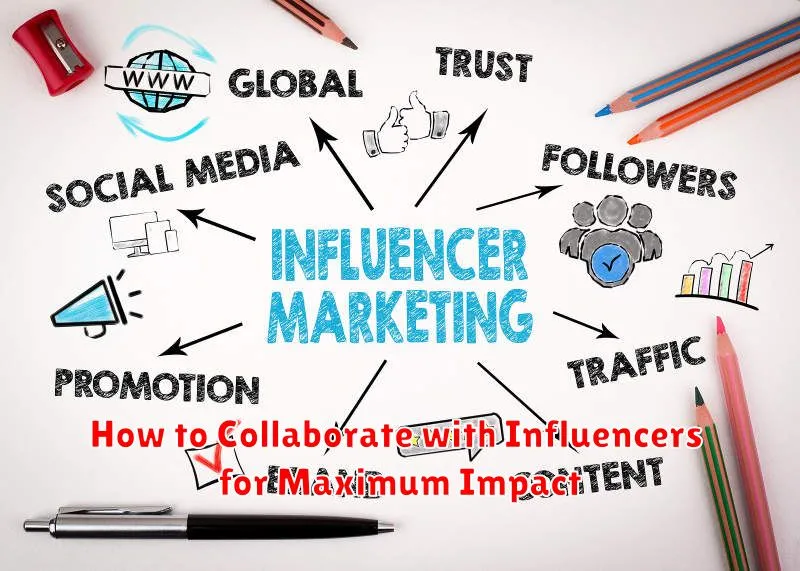In today’s digital landscape, influencer marketing has become an indispensable tool for brands seeking to expand their reach and engage with target audiences. Collaborating with the right influencers can significantly amplify your marketing message, build brand awareness, and drive conversions. However, simply partnering with any influencer isn’t enough. To achieve maximum impact, a strategic and well-defined approach to influencer collaborations is crucial. This article will delve into the essential steps for identifying, engaging, and managing influencers to maximize the return on your marketing investment.
How to collaborate with influencers effectively is a multifaceted process that requires careful planning and execution. From understanding your target audience and setting clear campaign goals to selecting relevant influencers and measuring the impact of your campaigns, each step plays a vital role in achieving desired outcomes. This guide will equip you with the knowledge and insights necessary to develop high-impact influencer marketing campaigns that generate tangible results, including increased brand visibility, stronger customer engagement, and ultimately, a boost in sales and revenue.
Understanding the Power of Influencer Marketing
Influencer marketing leverages the reach and credibility of individuals who have established a strong online presence and a dedicated following. These influencers can effectively promote your brand, products, or services to their audience, generating awareness, driving engagement, and ultimately influencing purchasing decisions.
Trust is a key element in influencer marketing. Audiences often perceive influencers as authentic and relatable, lending a degree of credibility to the brands they endorse. This can be significantly more impactful than traditional advertising methods, where consumers may be skeptical of overt marketing messages.
By partnering with the right influencers, businesses can tap into highly targeted niche markets, reaching specific demographics and interest groups. This focused approach ensures that marketing efforts are directed towards a receptive audience, maximizing the potential for return on investment.
Identifying the Right Influencers for Your Brand
Finding the perfect influencer match goes beyond follower count. It requires a strategic approach that aligns with your brand’s values, target audience, and campaign goals.
Target Audience Alignment: Begin by deeply understanding your target demographic. Which influencers do they follow and engage with? An influencer’s audience should mirror your desired customer profile.
Brand Affinity: Look for influencers whose content and personal brand align with your own. Authenticity is key. A forced partnership will be evident to their followers.
Engagement Quality: High follower counts can be deceiving. Focus on engagement metrics like likes, comments, shares, and saves. These indicate an active and involved audience, which translates to better results for your campaign.
Content Quality and Style: Does the influencer’s content style resonate with your brand aesthetic? Consider their posting frequency and the overall quality of their photos, videos, and captions.
Setting Clear Goals and Objectives for Your Campaign
Before initiating any influencer collaboration, it’s crucial to establish clear goals and objectives. This provides direction for the campaign and allows for accurate measurement of its success. Ask yourself what you want to achieve with this particular campaign.
Are you aiming to increase brand awareness, drive sales, generate leads, or perhaps boost website traffic? Defining these objectives upfront helps align your efforts with the influencer’s activities.
Consider using the SMART framework to guide your goal setting. Ensure your objectives are Specific, Measurable, Achievable, Relevant, and Time-Bound.
For example, instead of a vague goal like “increase brand visibility,” a SMART goal might be “increase website traffic by 15% within three months of the campaign launch through influencer-generated content.”
By setting measurable objectives, you can track the campaign’s progress and determine its overall effectiveness. This data-driven approach will inform future collaborations and allow you to optimize your influencer marketing strategy.
Crafting a Compelling Influencer Brief
A well-crafted influencer brief is essential for a successful collaboration. It acts as a roadmap, ensuring the influencer understands your brand, campaign goals, and desired outcomes. This document provides the influencer with the necessary information to create effective content that resonates with their audience and aligns with your brand messaging.
Start by providing a concise overview of your brand and campaign. Clearly state your objectives, target audience, and key message you want to convey. Outline the desired deliverables, whether it’s Instagram posts, YouTube videos, or blog articles. Specify the quantity, format, and timeline for each deliverable.
Clearly define the scope of work. Explain any mandatory talking points or hashtags. If there are specific legal or regulatory guidelines, include those as well. Provide examples of content that resonates with your brand’s aesthetic and values. This visual guidance can help the influencer understand your expectations.
Negotiating Contracts and Payment Terms
A formal contract is crucial for any influencer collaboration. It protects both you and the influencer, clearly outlining expectations and deliverables.
Key aspects to include are the scope of work (specific deliverables like posts, stories, or videos), timeline (posting dates and deadlines), payment terms (amount, payment schedule, and method), usage rights (how you can use the content created), and exclusivity (if the influencer is restricted from working with competitors).
Payment can be negotiated based on various factors, including the influencer’s reach, engagement rate, and the complexity of the campaign. Common payment structures include a flat fee per deliverable, a cost-per-engagement (CPE) model, or a commission-based arrangement.
Be transparent during negotiations and ensure both parties understand and agree to the terms. A well-defined contract sets the foundation for a successful and mutually beneficial partnership.
Measuring the Success of Your Influencer Collaboration

Measuring the success of your influencer marketing campaign is crucial to understanding its impact and optimizing future efforts. Key Performance Indicators (KPIs) should be defined before the campaign begins and align with your overall marketing goals. Don’t just focus on vanity metrics like likes and followers.
Reach and engagement are fundamental metrics. Reach measures how many unique individuals saw your content, while engagement looks at actions taken on the content, such as likes, comments, shares, and saves. Tracking these provides insights into audience interest and content effectiveness.
For campaigns focused on driving traffic or sales, website clicks and conversions are essential KPIs. Use trackable links and promo codes to monitor influencer-driven traffic and attribute sales accurately. This allows you to calculate the Return on Investment (ROI) of your influencer collaboration.
Beyond quantitative data, consider qualitative metrics like brand sentiment. Analyze the comments and discussions generated by the influencer’s content to gauge audience perception of your brand. This qualitative analysis can provide valuable context for your quantitative data.
Building Long-Term Relationships with Influencers
While one-off campaigns can be effective, building long-term relationships with influencers can yield significantly greater returns. Nurturing these relationships fosters trust and authenticity, allowing for more organic and impactful collaborations over time.
Consistent communication is key. Check in with your influencers regularly, even outside of active campaigns. This demonstrates your genuine interest in their work and builds rapport.
Provide ongoing value beyond monetary compensation. Offer exclusive access to new products or services, invite them to special events, and feature them in your own content. This strengthens the partnership and reinforces their connection to your brand.
Encourage open feedback and be responsive to their suggestions. Influencers have valuable insights into their audience and can provide crucial feedback to optimize future campaigns. A collaborative approach strengthens the relationship and fosters mutual respect.
Best Practices for Influencer Collaboration

Transparency is paramount. Clearly disclose the partnership to maintain audience trust and comply with advertising regulations. Ensure influencers understand their responsibilities regarding disclosure guidelines.
Provide creative freedom. While guidelines are essential, allow influencers to adapt messaging to their unique style. This authenticity resonates more effectively with their audience.
Maintain open communication. Regularly communicate with influencers throughout the campaign. Provide feedback, address questions, and ensure alignment with campaign goals.
Track and measure results. Utilize agreed-upon metrics to assess campaign performance. Analyze data to optimize future collaborations and demonstrate return on investment.

